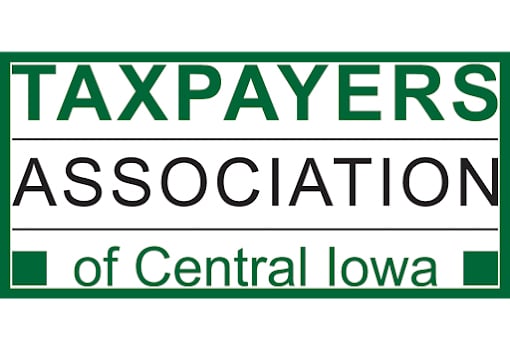Financial pros find a lot to like about the new SECURE Act

JOE GARDYASZ Feb 20, 2020 | 8:21 pm
6 min read time
1,395 wordsBanking and Finance, Business Record InsiderMost of us have heard the joke about how citizens should run whenever they hear “I’m from the federal government, and I’m here to help you.”
However, financial services professionals aren’t running away from the provisions of the new SECURE Act that went into effect on Jan. 1. The SECURE legislation — an acronym that stands for “Setting Every Community Up for Retirement Enhancement” — puts into place numerous provisions intended to strengthen retirement security across the country.
The legislation, among whose advocates and sponsors was Iowa Republican Sen. Chuck Grassley, is the first significant overhaul of retirement savings law since 2006, when the Pension Protection Act was signed into law.
Among the provisions of the new legislation are changes that make it easier for small businesses to set up retirement savings plans for their employees; changes to required minimum distribution rules that enable plan participants to contribute to their retirement savings longer; and new rules that allow employers to offer annuities as an investment option within their retirement plans.
The rate of additional retirees and the need for additional retirement savings is mind-boggling. Each day through 2027, about 10,000 additional baby boomers in the United States will celebrate their 65th birthday. At the same time, it’s estimated that about one-third of baby boomers currently have less than $25,000 socked away for retirement.
A big potential game-changer for small employers: Under the SECURE Act, small businesses can band together through Open Multiple Employer Plans, which are designed to help them to pool their resources together in order to offer cost-effective retirement plans that are easier to administer. The act also makes available an annual tax credit that covers up to $5,000 of plan costs for the first three years when an employer offers a workplace retirement plan.
The SECURE Act “is a win,” said Sri Reddy, head of Income Solutions for Principal Financial Group Inc. in Des Moines.
“The only criticism I’ve heard is that stretch IRAs are going away,” he said. Under that provision, people who inherited an IRA could stretch the payout of benefits over their lifetime. Now, the payout must be completed within 10 years.
“But I think generally the act is viewed as bipartisan, which is great,” Reddy said. “It’s viewed as helping both employers and employees, which is great. And I’m really glad that [Congress] did something, because there were a whole lot of states that were tired of waiting for the federal government that were going and creating their own state laws. … The more variations you create, the more expensive it gets for employers.”
Here are excerpts from the Business Record’s interview with Reddy about some of the finer details of the SECURE Act.
What sort of impact do you see the SECURE Act having overall?
When I talk about the retirement challenge in America, I refer to it as a four-prong approach. …. I think the SECURE Act is going to have an impact on all four of these areas.
You first of all need to have retirement plan coverage. We know that when employers offer retirement plans, the outcomes are better — 40 years of ERISA [the Employee Retirement Income Security Act of 1974, which set minimum standards for retirement plans] shows that.
The second thing: When you have coverage, that works for about 50% to 60% of the population, but not everybody enrolls. So you have to figure out how to drive higher participation. That can be driven by defaults, or by other mechanisms.
A third thing to address: When people start saving on their own, they might just do 1% or 2% of their [pay], or they might do enough just to get the match. But they may not be doing the 10% they need to mathematically get to a stable retirement. So we need to figure out how to educate the participants on how much they need to contribute over time to help them make that savings a reality.
The fourth thing I like to talk about: All of those things work really well together if you know how long you’re going to live. And most of us know that nobody’s really average, and nobody really knows when they’re going to go. … If you run out of money before you die, that’s a huge problem, so we talk about addressing longevity.
Why do you think the SECURE Act will be effective?
One, on giving coverage … I think it will make it easier and reduce the administrative burden for smaller employers to offer workplace-based retirement plans. Along those same lines, creating incentives for these programs I think will actually help participation rates go up because there’s language [in the act] that will simplify a number of things, including a safe harbor for the annuity provision, which lets you select default investments, which I think create better outcomes.
On the equity front, one of things I really like about the SECURE Act is the fact that the [required minimum distribution] age has been increased. The change reflects a fact that we’re all realizing, which is that human beings are living longer — and not only longer, but actually living healthier. And the types of jobs we’re doing are no longer necessarily physically demanding.
So why not stay in the workforce longer and continue to contribute to your retirement and let it grow a little longer?
And regarding longevity, I do think that having the safe harbor around lifetime income solutions in the plan, as well as having lifetime income illustrations, will both help people get ready for [a long retirement].
What are you hearing about multiemployer plans, and is Principal going to get involved in those?
We have all been studying the act; the industry has very much wanted the SECURE Act to happen for years. When it did happen right before Christmas to become effective Jan. 1, I don’t think people had a lot of time to react. … Clearly, the top three retirement plans, including Principal, have said for years that you’ve got to figure out how to make work-based retirement plans work for more Americans. To do that, you’ve got to get more employers to offer them.
What are the benefits of allowing annuities to be incorporated into 401(k) accounts, and why is this important?
Just like phones, tablets or cars, you’ve got “good” annuities and “bad” annuities. We’re not talking about bad annuities here. Principal doesn’t offer the annuities that have challenges to their reputation. We provide high-quality, plain vanilla products. … Annuities, when used properly, are the most cost-effective way to transfer longevity risk and to pool it with a group.
When you offer annuities through an institutional plan like an employer, you’re taking all of the distribution expense, and you’re actually creating institutionally priced annuities where a sophisticated employer is watching out for that participant.
Here’s a third dose of reality — the money that most Americans have in their 401(k) is the biggest chunk of their retirement savings. If you don’t give them tools for protecting that money and say, “Wait until you retire and then roll it into an IRA,” it may be too late if you have another [recession like] 2008 or a 2001.
Who will decide whether annuities are offered as part of the employer plan?
The ultimate decision is with the plan sponsor [the employer offering the plan]. Most plan sponsors don’t make these decisions on their own; usually they have consultants or advisers that are helping them. So we need to make sure the advisers have an awareness of what solutions are out there and how to compare them — how to compare apples and oranges, because they will be apples and oranges. A third variable is: Does the plan sponsor have the technology that’s required to transmit the data for the plan? So all three of these are gatekeepers.
Is just having a new law in place that puts retirement plans in the news a good awareness-builder?
Yes — the biggest friend of retirement planning is time. The sooner you start, the better off you’re going to be. So if we create awareness about it and get employees thinking about it as they get started in the workplace. I think still having the foundation of Social Security and having this [SECURE Act] as the next pillar can be really effective.










